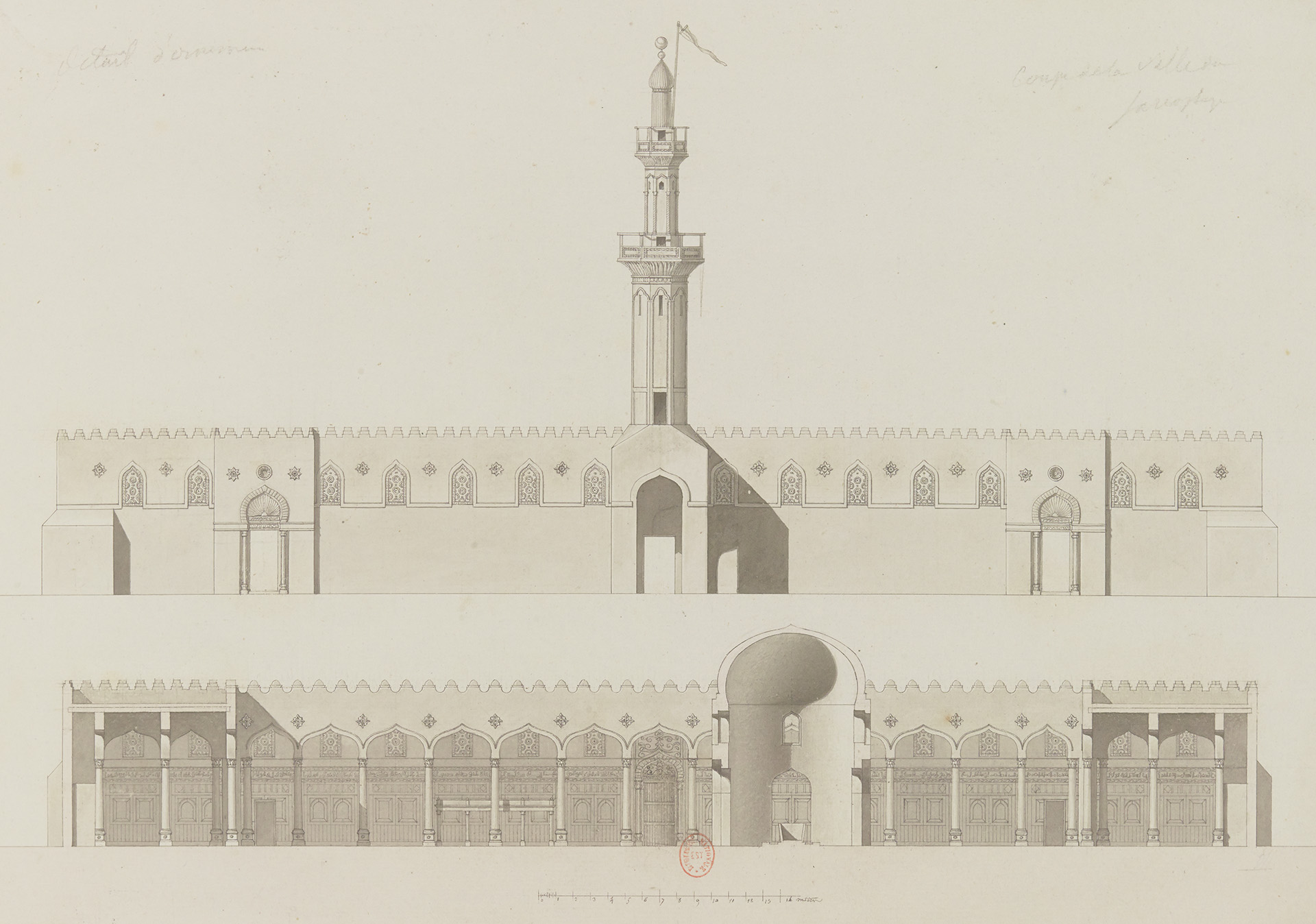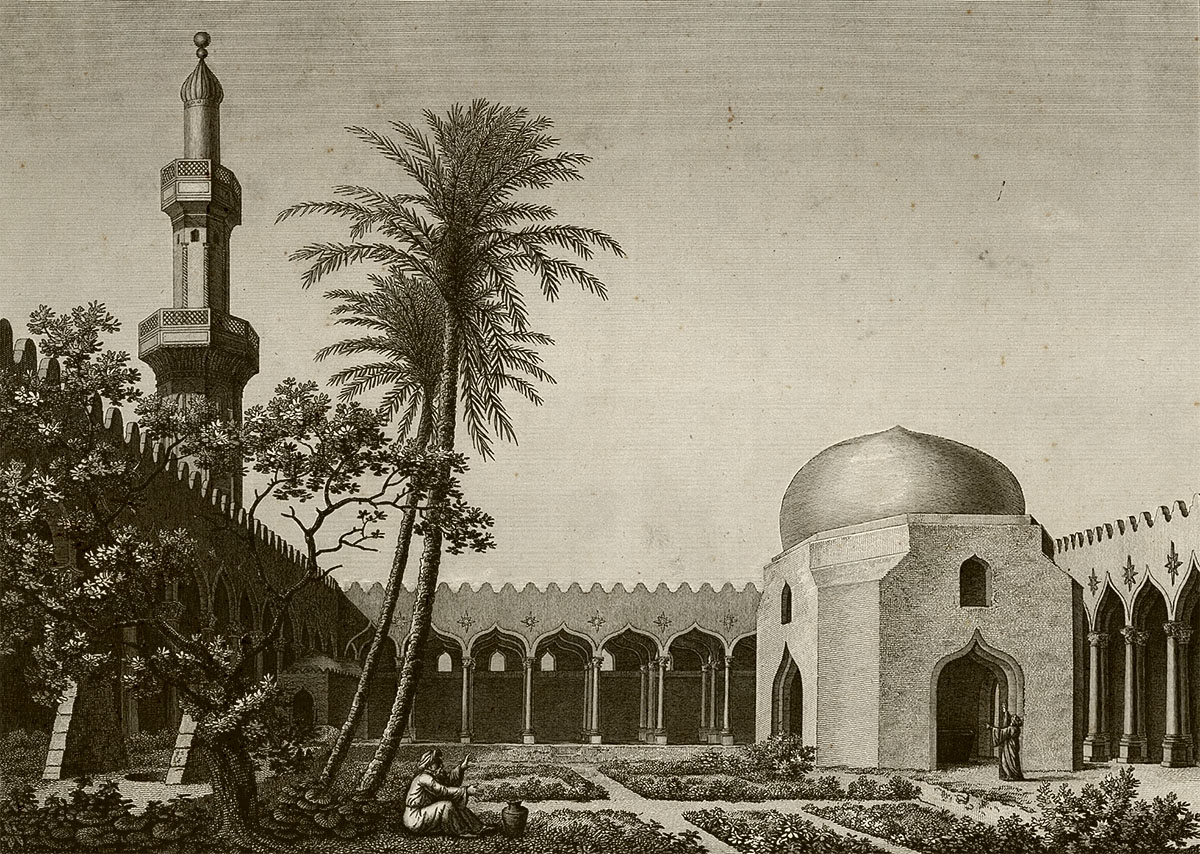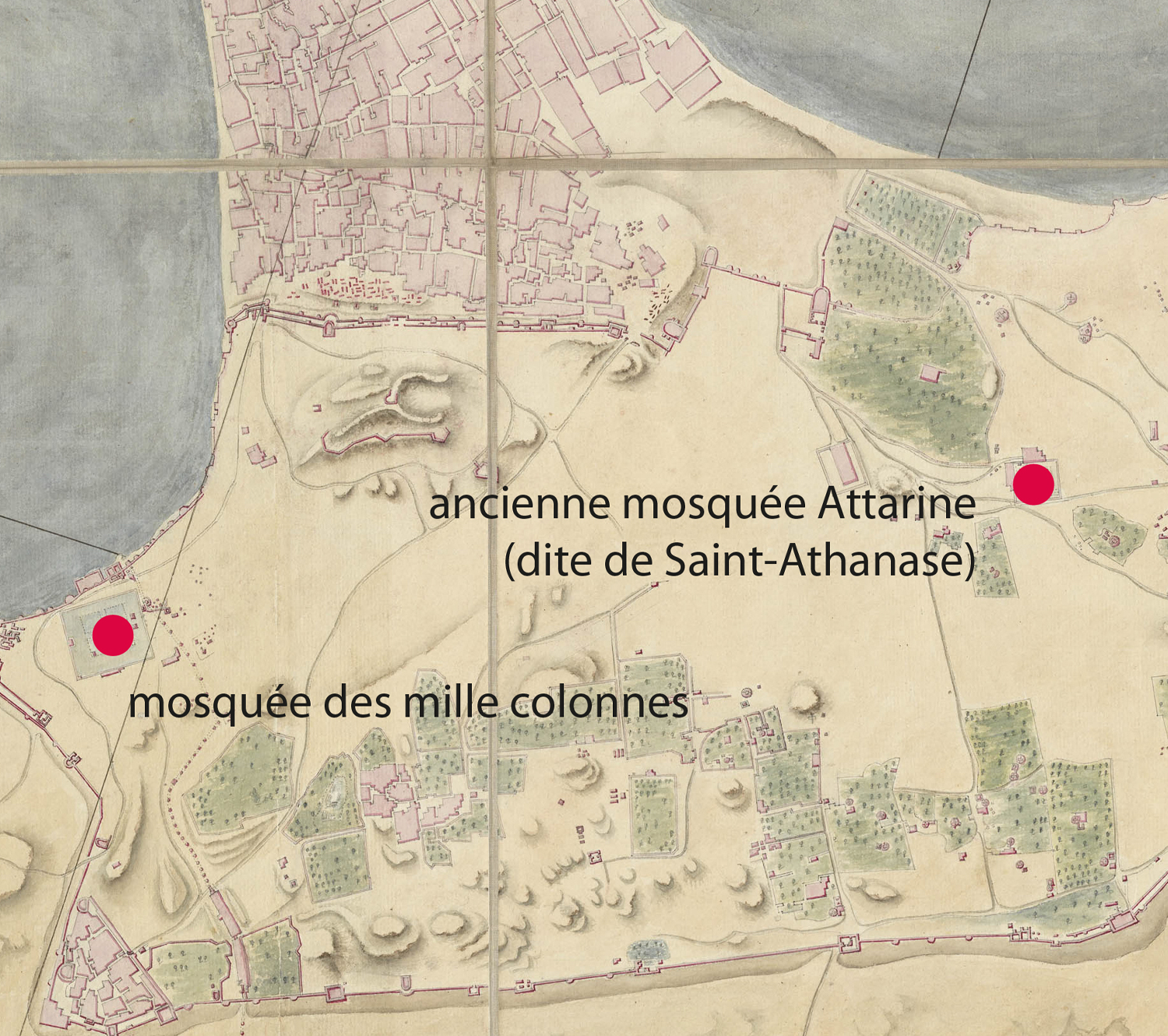
“Elevation and section of a former basilica, commonly known as the Mosque of Saint Athanasius”, ink wash, watercolour and pencil, Charles-Louis Balzac, Description de l’Égypte, Antiquités, Planches, Vol. 5, pl. 38.2-3
The mosques of a Thousand Columns and of Saint Athanasius, both of which have now disappeared, were located along what is currently Fouad Street. These two monumental mosques were among the oldest in Alexandria, founded in the first centuries of Islam. Their architecture was characterised by a wide rectangular courtyard, bordered on all four sides by porticoes (riwâqs) with several rows of parallel columns. This architectural model is typical of the first large mosques in Egypt, as seen in Cairo in the mosques of Amr Ibn al-As and Ibn Tulun. The columns in these mosques were made of capitals, bases and shafts salvaged from the ruins of the ancient city.
“Interior view of a former basilica, commonly known as the Mosque of Saint Athanasius”, intaglio engraving, Charles-Louis Balzac, illustrator, Guillaume-François Semen, engraver, , Description de l’Égypte, Antiquités, Planches, Vol. 5, pl. 39.1


“Elevation and section of a former church known as the Mosque of a Thousand Columns or of the Septuagint”, ink wash, watercolour and pencil, Charles-Louis Balzac, Description de l’Égypte, Antiquités, Planches, Vol. 5, pl. 37.2-3


